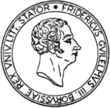Didier Roth's coplanar toothed disk adding machine from 1842
At a time when the design of the tens carry in calculating machines was often still the limiting factor for the number of digits in the machine, Didier Roth, a French doctor, had an ingenious idea: he built a tens carry that stored power, which was then available when it was executed. This meant that secondary tens transfers could also be carried out across all digits without any problems. To do this, he used a special circular segment disk, the shape of which is somewhat reminiscent of two snail shells placed together. This disk pushes the tens carry lever, which is pressed by a spring in the direction of the result unit shaft, further and further away from this shaft the higher the set digit is. If the number 9 can be seen in the result unit, the carry lever is at the greatest distance from the shaft and the spring is under the greatest tension. During the transition from 9 to 0, the transfer lever inside the machine slips over the edge of the circular segment disc and is pushed towards the center in the direction of the shaft by the spring force. At this moment, the other end of the tens transfer lever grips the next higher digit and pushes it exactly one digit further. This is Roth's ingenious solution to the transfer of tens in his addition machine.
Computer science student Lena Carta has created an animation of a two-digit version of this addition machine as part of the lecture series on the history of machine computing with Professor Dr. Ina Prinz, which provides a precise insight into how the machine works and the fascinating transfer of tens. Enjoy our new calculating machine of the week!






